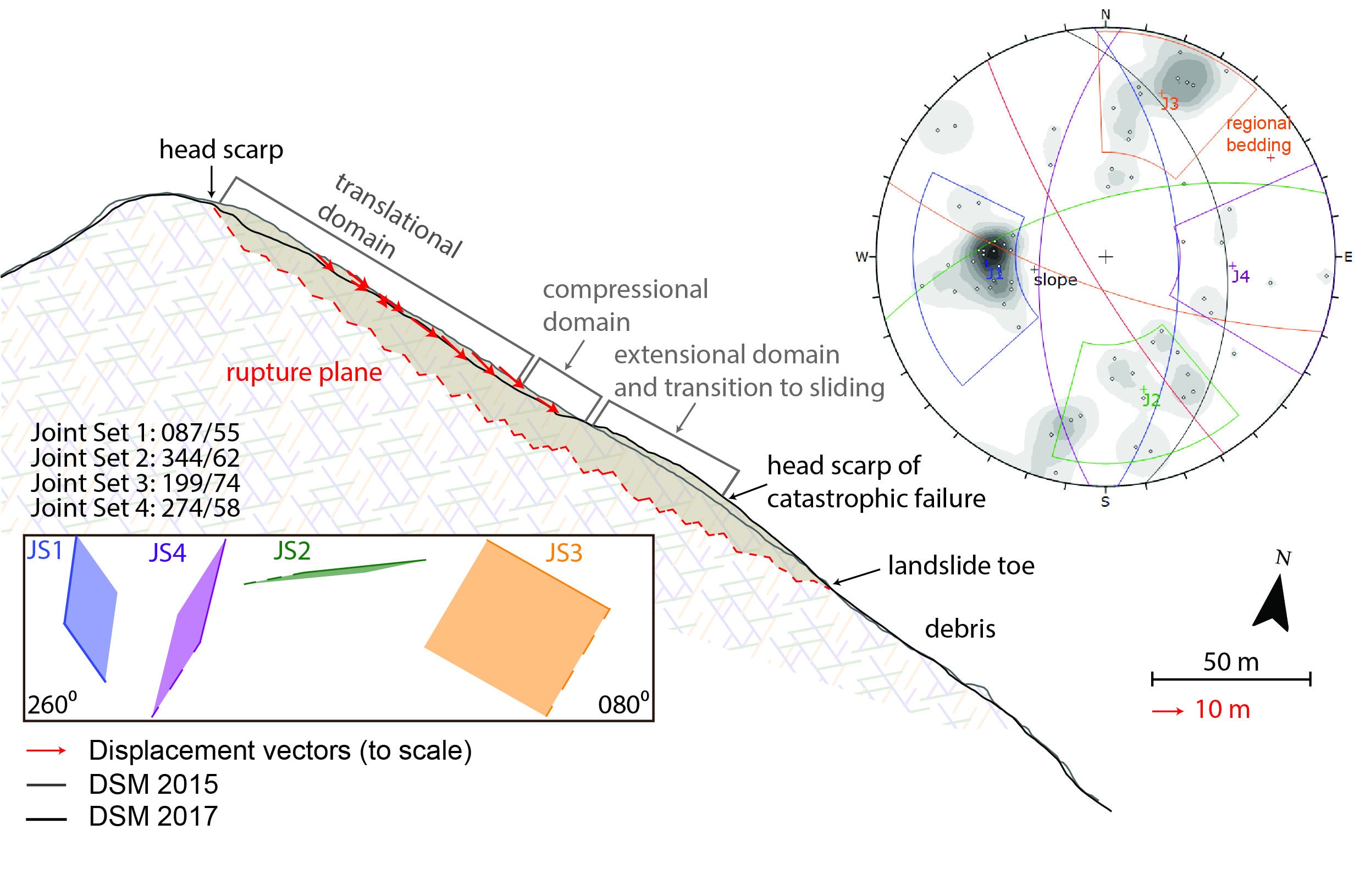
Corinne Singeisen, Chris Massey, Andrea Wolter, Richard Kellett, Colin Bloom, Tim Stahl, Caleb Gasston, Katie Jones, 2022. Mechanisms of rock slope failures triggered by the 2016 Mw 7.8 Kaikōura earthquake and implications for landslide susceptibility. Geomorphology, Volume 415, 2022, 108386,
ISSN 0169-555X, https://doi.org/10.1016/j.geomorph.2022.108386
https://www.sciencedirect.com/science/article/pii/S0169555X22002793)
Landslide failure mechanisms are influenced by topography, lithology, structure and rock mass damage – factors that also control landslide susceptibility. Failure mechanisms, however, are rarely considered in regional-scale coseismic landslide susceptibility analyses. In this study, conceptual models have been developed for three earthquake-induced landslides in Cretaceous greywacke and Neogene siltstones triggered by the 2016 Mw 7.8 Kaikōura earthquake on New Zealand's South Island. Landslides in Cretaceous greywacke illustrates the failure stages of a rock mass comprising multiple sets of closely-spaced and low persistence discontinuities. Conversely, analysis of a landslide in Neogene massive siltstones illustrates the role of high-persistence bedding planes in generating large translational rockslides.
Results suggest that (1) failure mechanisms and, as a result, coseismic landslide susceptibility factors, may vary fundamentally in different geological settings; (2) characteristic spatial landslide displacement patterns may be used to remotely identify relevant failure mechanisms; and (3) the amount of displacement that can be accommodated before a failure transitions from sliding to avalanching, is highly dependent on material characteristics and topographic constraints.
Keywords: Slope stability; Failure mechanism; Landslide susceptibility; Coseismic landslide; Kaikōura earthquake
Head Office
1 Fairway Drive,
Avalon 5010
PO Box 30-368,
Lower Hutt 5040
New Zealand